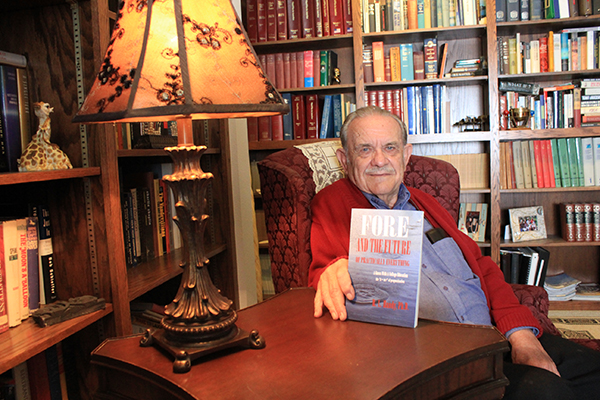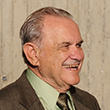
Scientific explanation just got a whole lot funnier. Five years in the making, a book called “FORE and the Future of Practically Everything” was officially released by Moonshine Cove Publishing on Nov. 15, 2013. The author is Anson Marston Distinguished Professor Emeritus Richard Handy.
“FORE and the Future of Practically Everything” uses a scientific theme, a first-order rate equation (FORE), and applies it to all manner of topics from the rise in sea level to heights achieved in the pole vault. The book targets both technical and non-technical readers. It goes from the future of petroleum production to life expectancy and where to look for the “lost continent” of Atlantis.
FORE applies to processes that are slowing down and approaching hypothetical end points. The first story in the book describes declining speeds of a pickup truck after it runs out of gas. A pickup truck was used because pickup trucks are more likely to be driven by men and therefore are more likely to run out of gas.
The rise in sea level is shown to be a continuation of a process that began 12,000 years ago when glaciers started melting. However, the rate now is about five times faster than it should be, an indication of climate change. The book has numerous graphs and photographs, including one of the ice-bound Arctic Ocean in the 1950s, and another showing open water 50 years later.
Handy shows how FORE can cut across a broad range of topics from life expectancy to home run hitting, from aspects of population growth to world food production. The author dislikes the name “futurist,” and prefers to call the book “a guess with a college education.”
Readers will find refreshing phrases like, “A scientific law is not the same as a legal law, for which we can be eternally grateful.” Logarithms are introduced as “a choral group of lumberjacks who cap off each performance by cutting down a tree,” followed by a more conventional explanation. FORE is analytical, which means that the equation came first instead of being tagged on to batch of data by a computer.
The book is available on amazon.com, both in paperback and Kindle versions.
——————————————————————————–
Handy taught geotechnical engineering at Iowa State University from 1956 to 1991, retiring as Anson Marston Distinguished Professor Emeritus. He holds a bachelor’s degree and master’s degree in geology, as well as a doctorate in soil engineering and geology from Iowa State. Handy has authored several textbooks as well as many journal articles and papers. His book, “The Day the House Fell,” published in 1995, has gone through numerous printings, and puts a humoristic twist on soil problems that home buyers, builders, architects and real estate agents must deal with. He also wrote “Screenings from the Soil Research Lab,” a bimonthly geotechnical engineering newsletter that ran from 1957 to 1967 from the Iowa Engineering Experiment Station (now known as the Iowa State University Engineering Research Institute).
